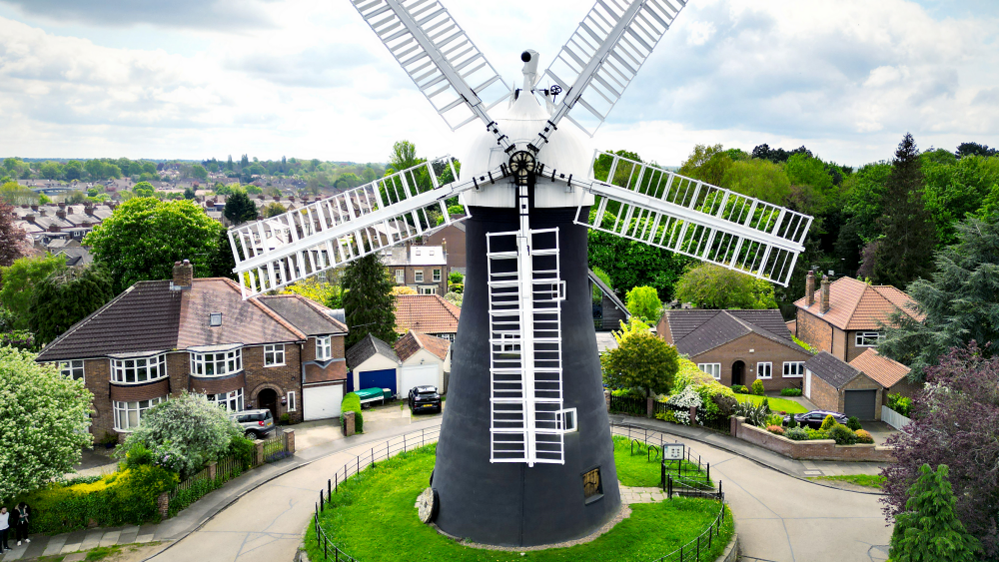Exhibition shares memories of city's sweet past
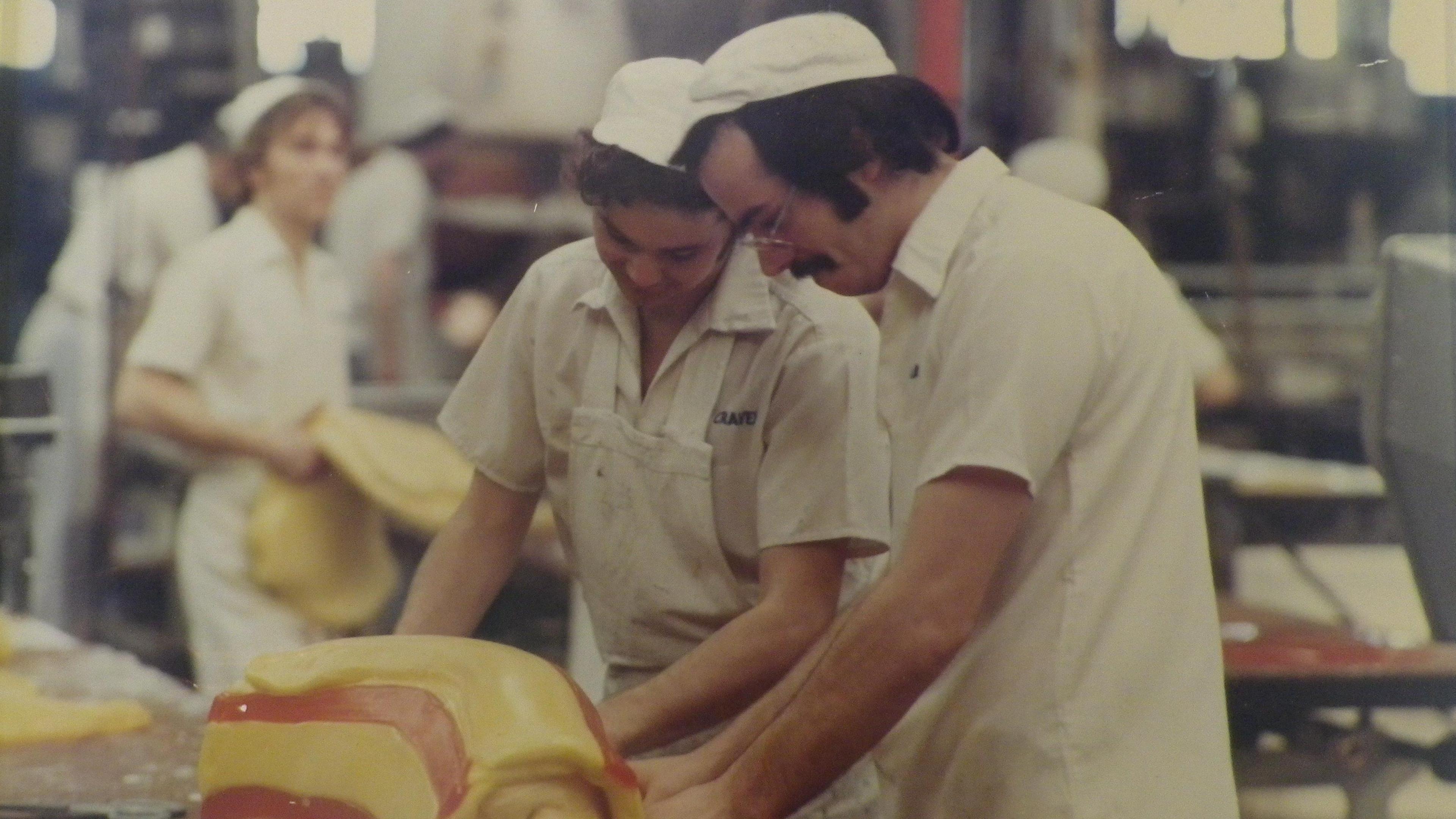
Workers at Craven's sweet factory during the 1970s.
- Published
The stories and memorabilia of former workers at York's three largest confectionery companies have gone on display as part of a new community-led exhibition.
Sugar, Skill and Shiftwork: York's Confectionery Workers is at York Castle Museum and explores the lives of employees of Rowntree's, Terry's and Craven's throughout the 19th and 20th Century.
The exhibition includes items on loan from the public, such as uniforms, retro sweet packaging, photographs and other memories, recorded as oral submissions.
Philip Newton, community participation manager at York Museums Trust said the "fantastic" community response helped to provide a human perspective on a key part of the city's past.
"We have a huge collection from Rowntree's, Terry's and Craven's but a lot of it is from the business side, and we had very few stories from the real people who made these world-renown sweets and chocolates," he said.
The museum issued a public appeal in June for people to share their lived experiences, objects and memories, which now form a large part of the exhibition.
Amongst the items are old Terry's Chocolate Orange and KitKat packaging, worker ID cards, diaries and photographs from inside each factory, detailing daily life.
Workers voices can also be heard, taken from the archive managed by York Oral History Society.
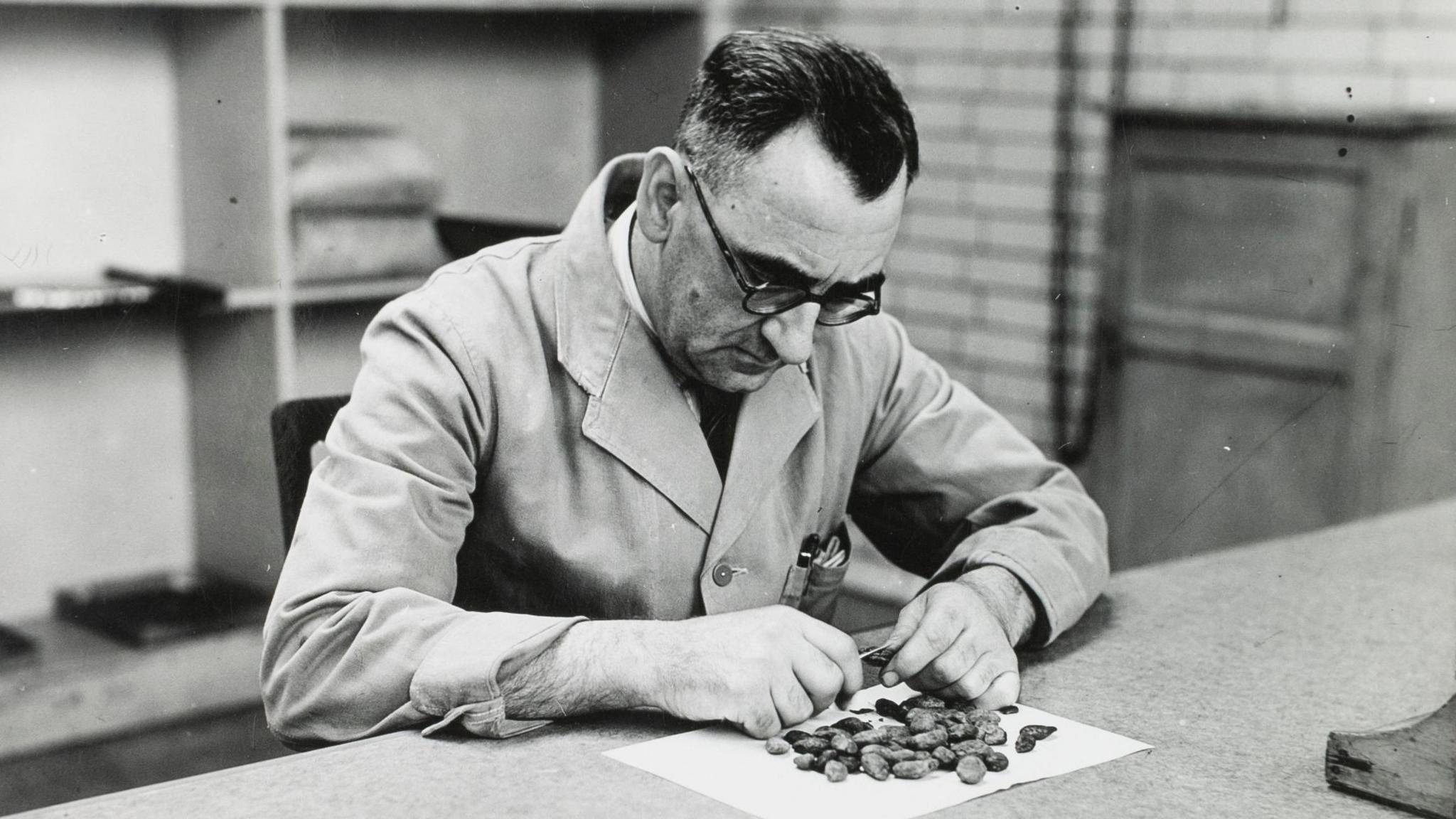
A factory worker inspecting cacao beans at Terry's factory in the 1950s
"It's amazing the breadth of stories, from how lovely it was to work there, to really poignant stories about people's mental health or issues they had with unions," Mr Newton explained.
"These are real stories from real people, and it's a really good mixture."
During the 19th and 20th Century, York was a large confectionery producer, with a combined workforce of around 18,000 people employed by the industry.
The exhibition coincides with the centenary of Joseph Rowntree's death, who was well-known for his philanthropic work in the city.
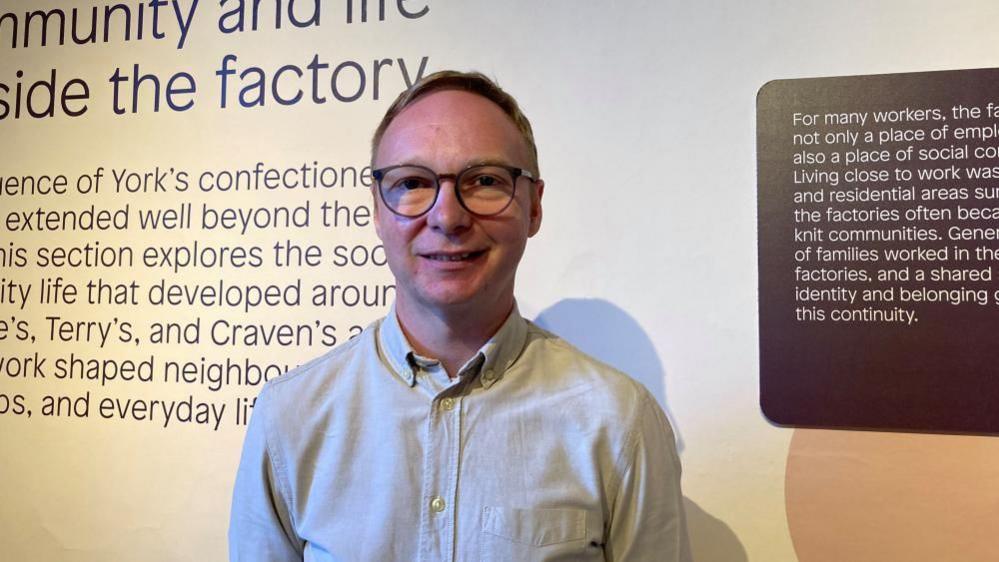
Philip Newton, community participation manager at York Museums Trust
Sugar, Skill and Shiftwork: York's Confectionery Workers is located in the Community Corridor of York Castle Museum and is included in the price of a general admission ticket.
It will run until September 2026, but Mr Newton hopes to establish a permanent display addressing York's sweet history.
"Community exhibitions are vitally important for understanding our shared heritage and preserving local memory," he added.
"This ignites different memories for people or family and friends who have worked in the industry.
"This is just the starting point of a conversation we want to build upon."
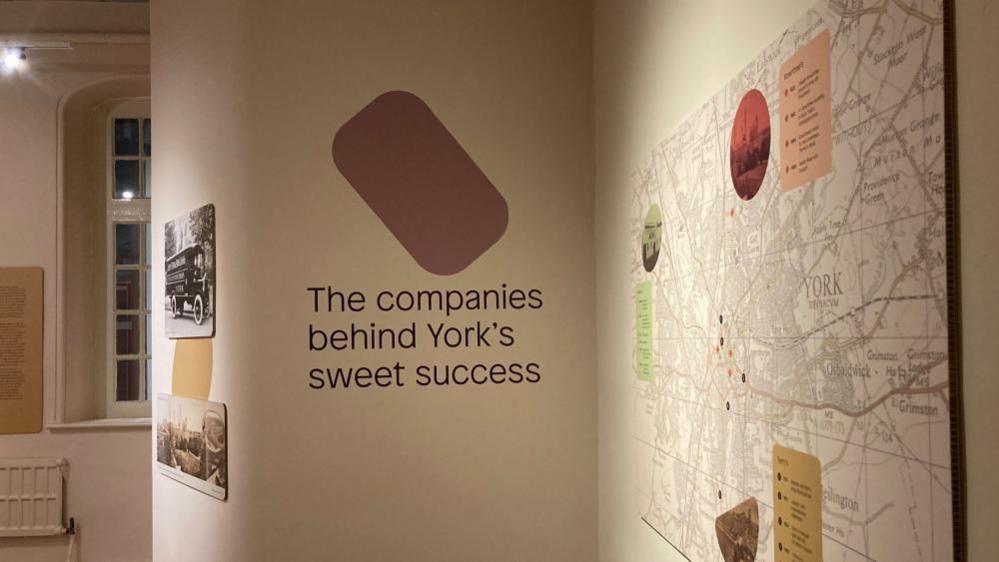
The exhibition will be running until September 2026
Get in touch
Tell us which stories we should cover in Yorkshire
Listen to highlights from North Yorkshire on BBC Sounds, catch up with the latest episode of Look North.
Related topics
Related Internet Links
- Published1 March
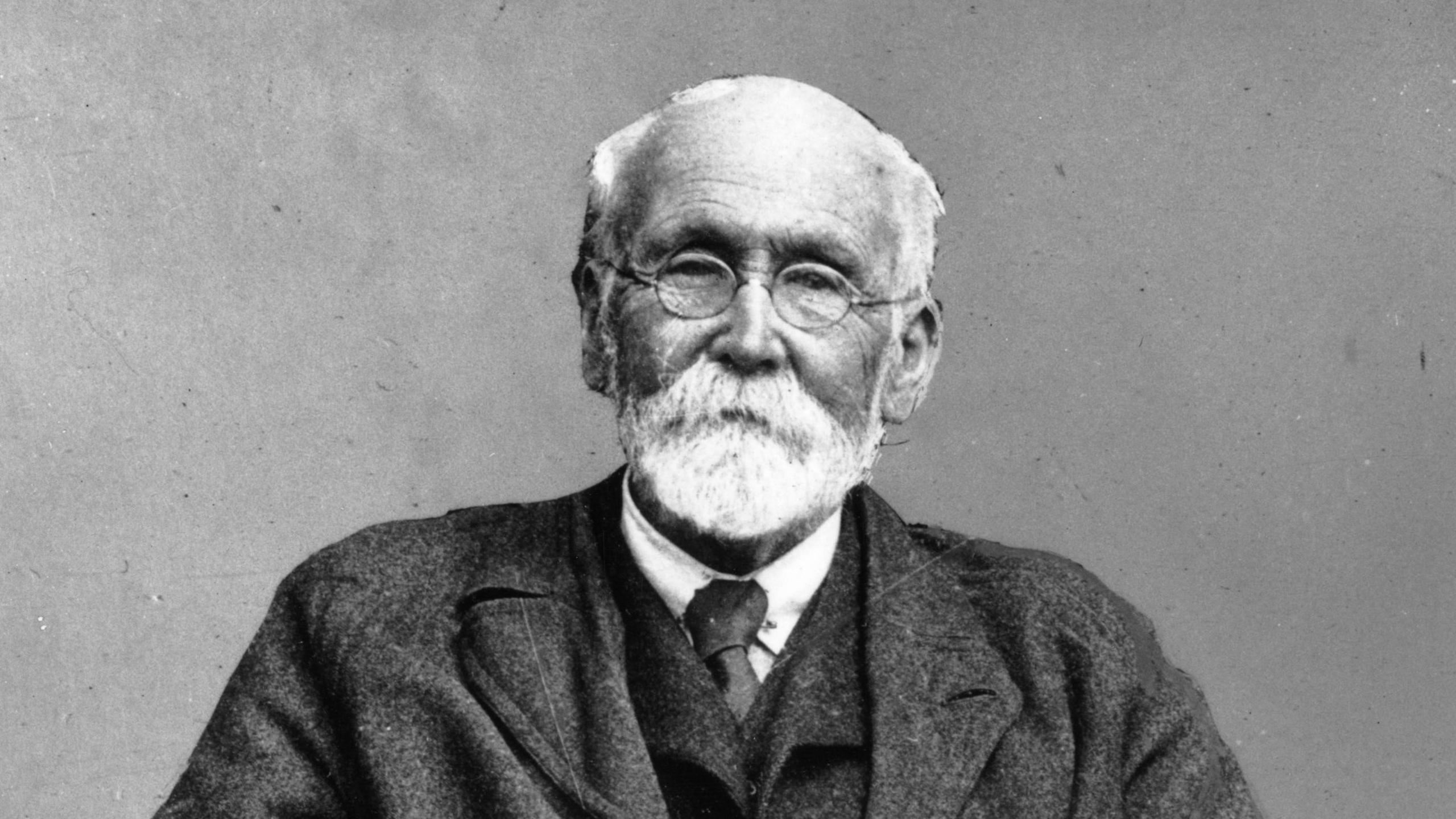
- Published16 August 2024
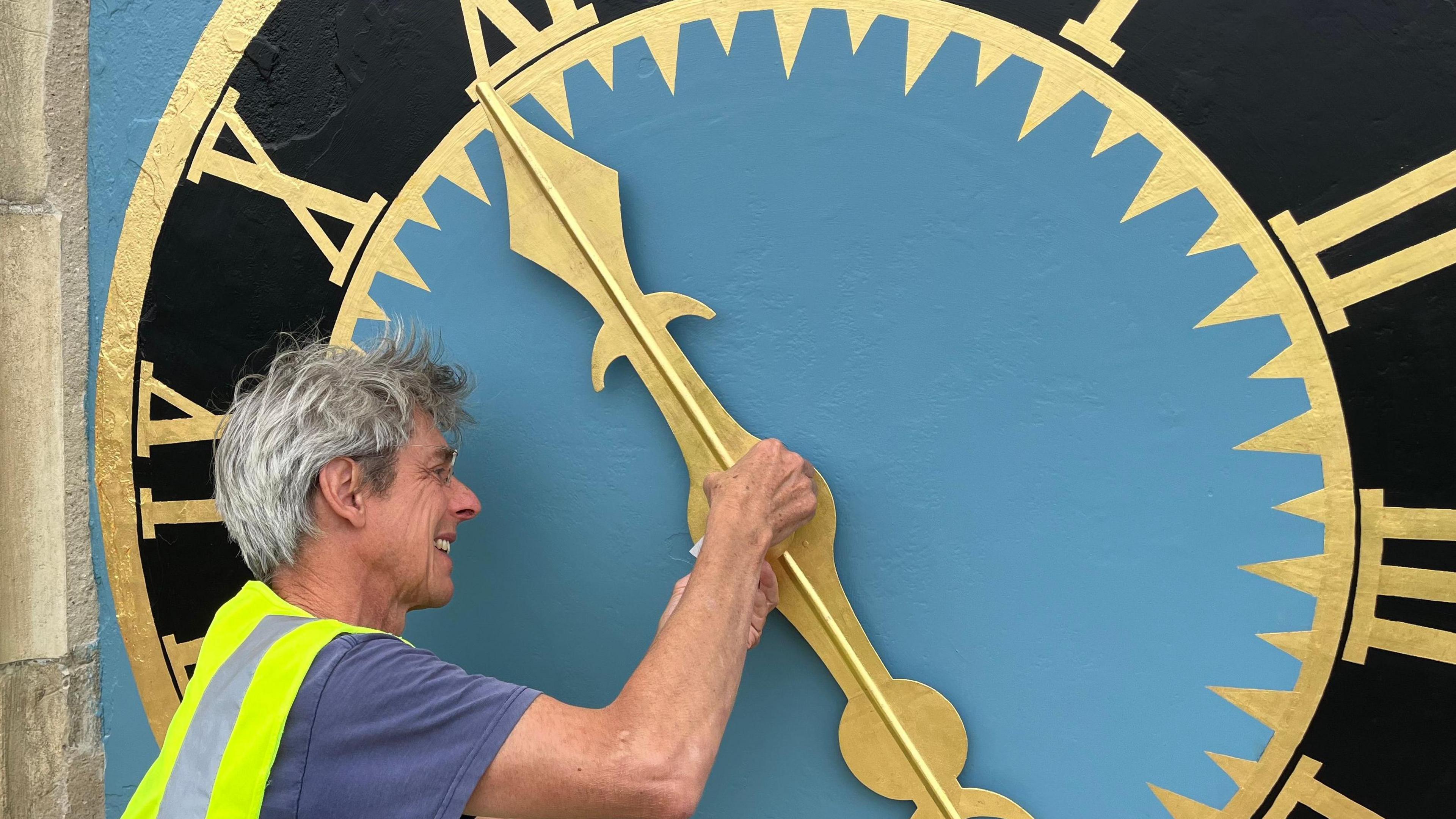
- Published25 September
